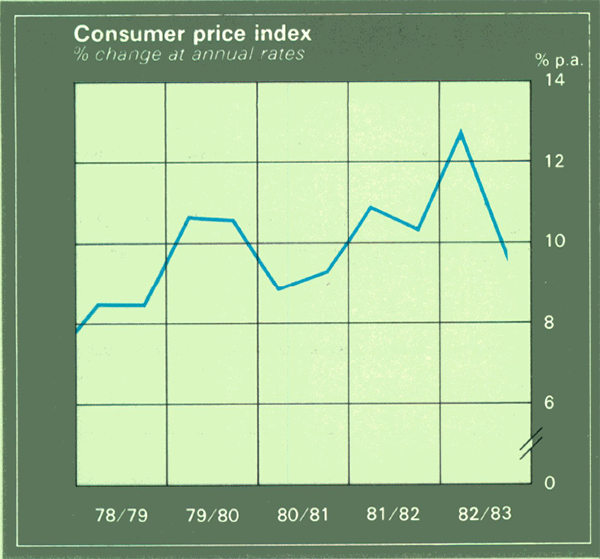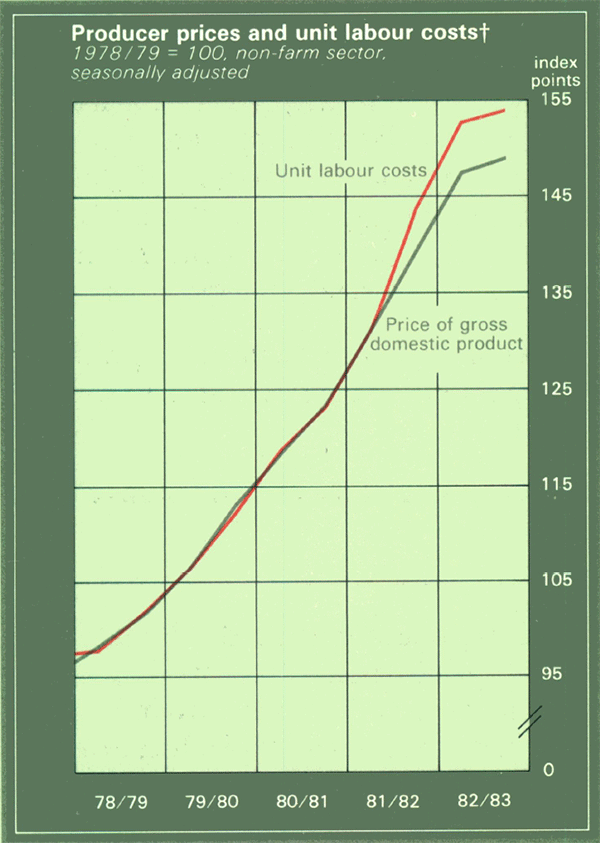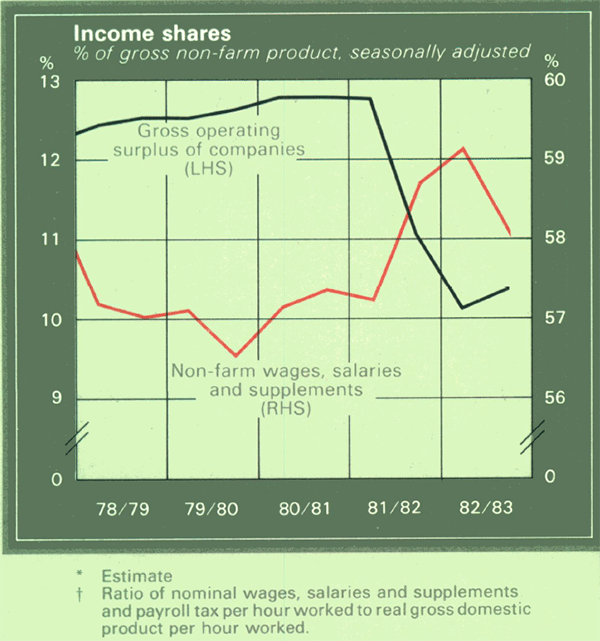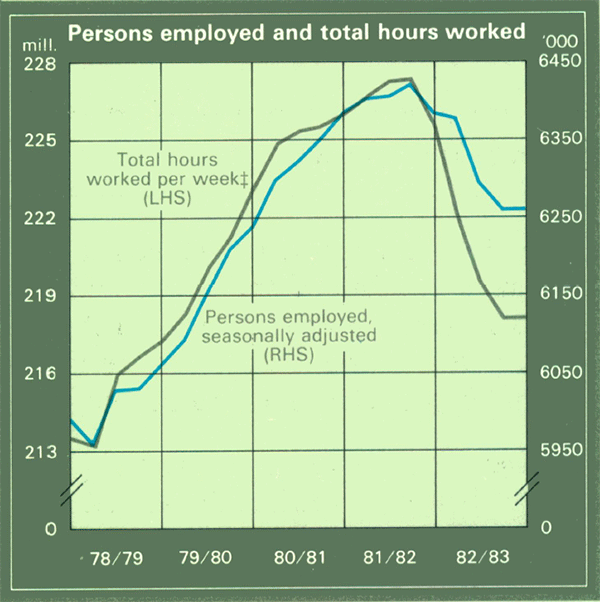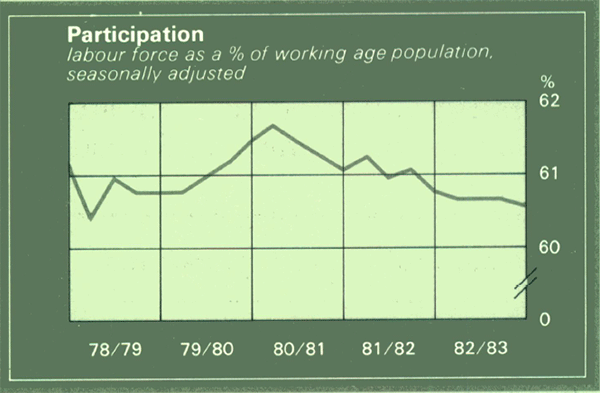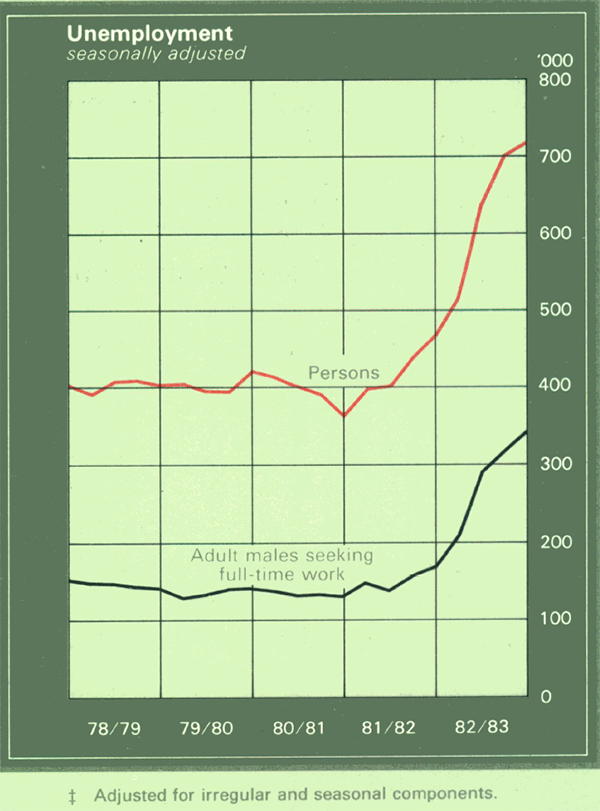Reserve Bank of Australia Annual Report – 1983 Economic Developments
International Developments
Economic conditions
For 1982/83 as a whole, levels of economic activity in industrial countries generally remained subdued. However, in the second half of the year there were signs of the long-awaited recovery. This was especially so in the United States, where real gross domestic product (GDP) rose strongly in both March and June quarters; there was also some pick-up in activity in West Germany and the United Kingdom. Elsewhere in Europe conditions remained sluggish. The Japanese economy grew fairly strongly, but by much less than in earlier years.
Rates of unemployment continued to rise in the first half of the year but there was some levelling in the six months to June. Near the end of 1982/83, unemployment in the OECD area was about 9 per cent, compared with 8.1 per cent in June 1982 and 6.7 per cent in June 1981. (See Graph 7)
Inflation fell further in most industrialised countries in 1982/83, with the declines in the United States and United Kingdom particularly sharp. Consumer prices in the OECD area grew by about 5.5 per cent in the twelve months to June 1983, compared with 8.5 per cent in the year to the previous June. The reduction of inflation was related to the continued weakness in economic activity and reduced growth in wages. It was also affected by sizable falls in the price of oil. These falls have been beneficial for oil-using countries, both developed and developing. However, they have meant difficulties for oil-producing countries, particularly those with heavy burdens of debt.
Falling receipts from oil caused the aggregate current account of the oil-exporting countries to swing into deficit. Even so, the combined deficit of OECD countries increased in 1982/83. This was more than accounted for by a very sharp swing from surplus to deficit for the United States; the current account positions of most other OECD countries improved.
With international trade stagnant, prices for commodities (other than oil) had fallen substantially through 1981/82. They remained subdued early in 1982/83 but began to rise after October. As measured by the “Economist” index, commodity prices, in US dollars, were about 11 per cent higher in June 1983 than in June 1982.
Short-term interest rates generally declined in 1982/83. In the United States rates fell sharply early in the year but showed little net change for several months thereafter. In other countries interest rates also tended to decline, although in some there were sizable fluctuations associated with changed expectations about the values of currencies in foreign exchange markets. There were net falls in long-term rates of interest over the year, but by smaller amounts than for short-term rates. Late in the year interest rates were rising again in some countries, including the United States.
Although most countries have the medium-term aim of reducing government deficits, the weakness in activity in many has made this difficult to achieve. Monetary policies seem to have become less restrictive in 1982/83 in a number of those countries which have made substantial progress towards bringing inflation under control; however, in some smaller countries inflation and external imbalances have continued to constrain options for more accommodating policies. In the United States rates of monetary growth quickened during the year, but interpretation of this was complicated by institutional factors affecting the relevant statistics.
In foreign exchange markets, the US dollar, on a trade-weighted basis, was strong through most of 1982. It weakened towards the end of the year but strengthened again in the first half of 1983. Over 1982/83 the US dollar showed a net weakening against the yen, while appreciating against sterling, the French franc and, to a lesser extent, the deutschemark.
International financial problems
International financial markets came under severe strain during 1982/83. A major source was the debt servicing difficulties of a number of developing countries. These difficulties stemmed from limited opportunities to export, reduced oil prices, slow economic adjustment and the heavy cost of servicing large foreign borrowings. Pressures were particularly intense in the latter part of 1982, when serious liquidity problems emerged almost simultaneously in some of the major debtor countries.
A concerted response by national governments and central banks, international institutions and commercial banks has so far enabled the international monetary system to cope with these difficulties. A number of developing countries rescheduled their debts, generally in the context of an economic adjustment programme supported by the International Monetary Fund. In some cases, the Bank for International Settlements mobilised substantial short-term assistance until arrangements with the Fund became active. To strengthen the Fund's role in this process, an increase in resources available to it – through quota subscriptions and a strengthening of the General Arrangements to Borrow – is being organised.
For central banks and other supervisory authorities in the major industrial countries, the challenges posed by sovereign debt problems were compounded by difficulties for some commercial banks with their domestic loans, particularly to companies in energy-related industries, and by the failure of a sizable bank in both the United States and Italy. Central banks provided support to domestic financial markets when necessary. They have also taken initiatives to strengthen their surveillance of commercial banks' activities and to tighten prudential requirements for banks.
The Australian Economy
The balance of payments
There was an overall surplus of $2,430 million on Australia's balance of payments in 1982/83. This was the net outcome of a deficit on current account of $6,460 million and net inflows of capital amounting to $8,890 million. The main aggregates are shown in Graph 8.
Major influences on the balance on current account were a decline in spending by Australians, the continued sluggishness of international trade and the drought. Devaluation of the Australian dollar enhanced the competitiveness of local industry, with the dollar's trade-weighted index of value in 1982/83 about 10 per cent lower, on average, than in 1981/82.
7. International Economic Conditions
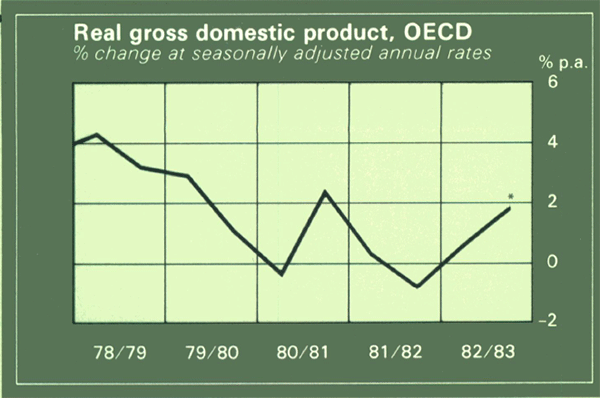
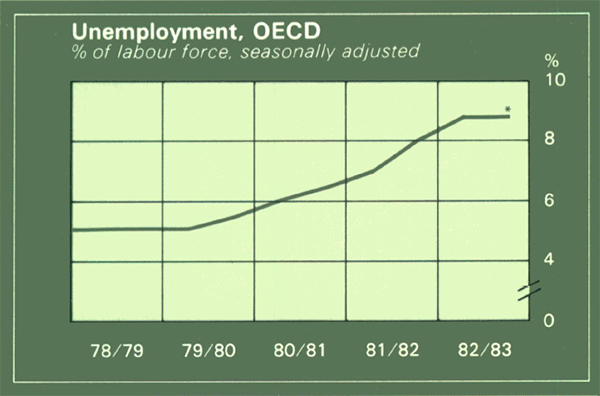
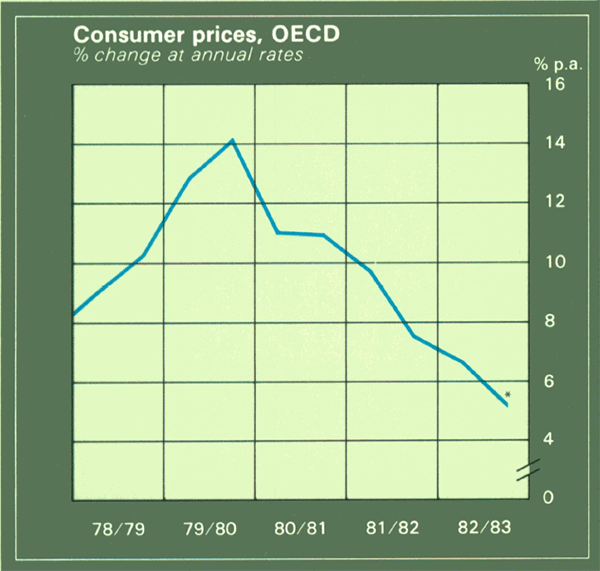
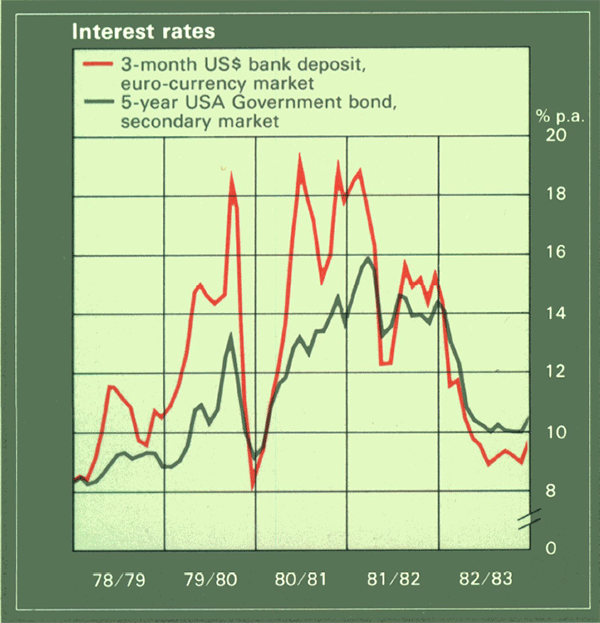
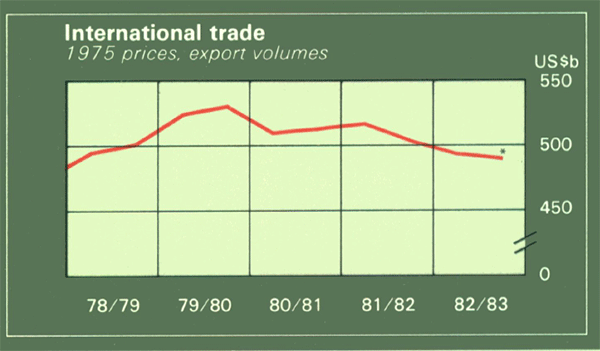
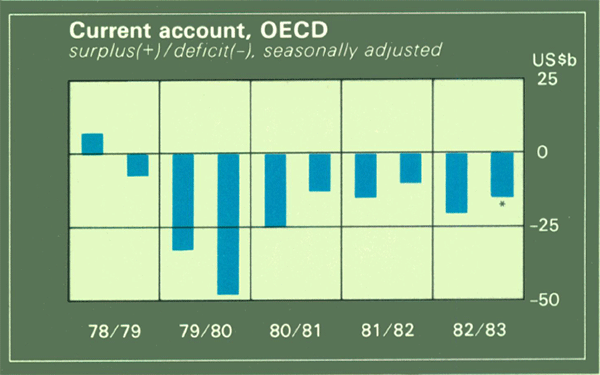
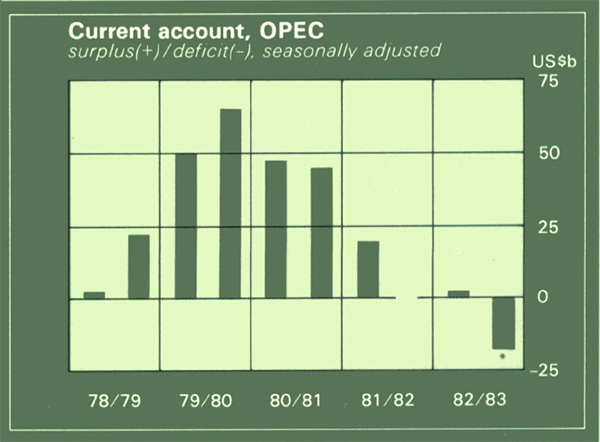
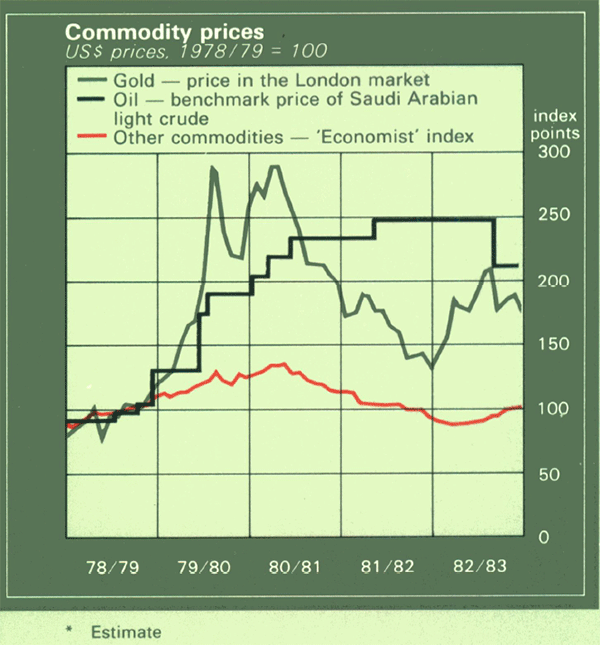
Exports of goods, in value terms, increased by 9 per cent, compared with increases below 2 per cent in each of the two previous years. This rise was due largely to higher Australian dollar prices for non-rural commodities; there was also some increase in the quantities of non-rural goods exported. In contrast, for rural exports there was little change in average prices (increases for some commodities were offset by a sharp drop in the price of sugar) and a small decline in volumes. The drought reduced substantially the quantity of cereals exported but led to an increase for meat.
Reduced spending by Australians and the impact of the devaluation were reflected in imports. These fell in 1982/83 by almost 4 per cent, compared with an average increase of almost 20 per cent in the previous two years. The much lower result was due to a sharp fall in the volume of imports. The share of imports in total spending declined; a particular influence here was the substantial decline in private investment on plant and equipment, which has a high imported component. Average prices of imports rose by 10 per cent, largely due to the falling value of the Australian dollar.
The outcome of the movements in imports and exports was a much reduced trade deficit in 1982/83. The customary deficit on invisibles was largely unchanged – a big rise in interest payments on foreign debt was offset by other factors such as lower freight payments for imports and increased earnings on international reserves. As a result, the overall current account deficit was, like the trade deficit, considerably reduced. It amounted to about 4 per cent of GDP, compared with 6.1 per cent in 1981/82.
The current account deficit was more than covered by heavy net inflows of capital. About 94 per cent – or $8,330 million – of capital inflow was on private account; borrowing of $1,300 million by public non-monetary authorities is included in this. As in 1981/82, much of the private inflow was in the form of borrowing, a substantial component of which was short-term.
Including the effect of changes in the valuation of gold and foreign currencies, Australia's international reserves rose over the course of 1982/83 by $4,230 million to $10,750 million.
Production and spending
There was a continuation in 1982/83 of the contraction in economic activity which had commenced during the previous financial year. This contraction became more widespread, affecting consumer spending and inventories, as well as private fixed investment. For the year as a whole, gross national expenditure, in real terms, dropped by about 4 per cent after increasing strongly in 1981/82.
The sharp fall in imports of goods and services, together with the pick-up in exports, meant that this weakness in spending did not reflect fully in domestic production. For 1982/83 as a whole, Australia's real GDP was about 1½ per cent lower than in 1981/82. Non-farm production was about the same in 1982/83 as in the year before but, because of the severe drought, farm output dropped sharply.
Production by manufacturing industry was much weaker than total non-farm product. As measured by the Statistician's index, manufacturing production in 1982/83 was, on average, about 10 per cent lower than in 1981/82. It dropped sharply in the first half of 1982/83 but showed signs of picking up in later months.
8. Balance of Payments and Exchange Rates
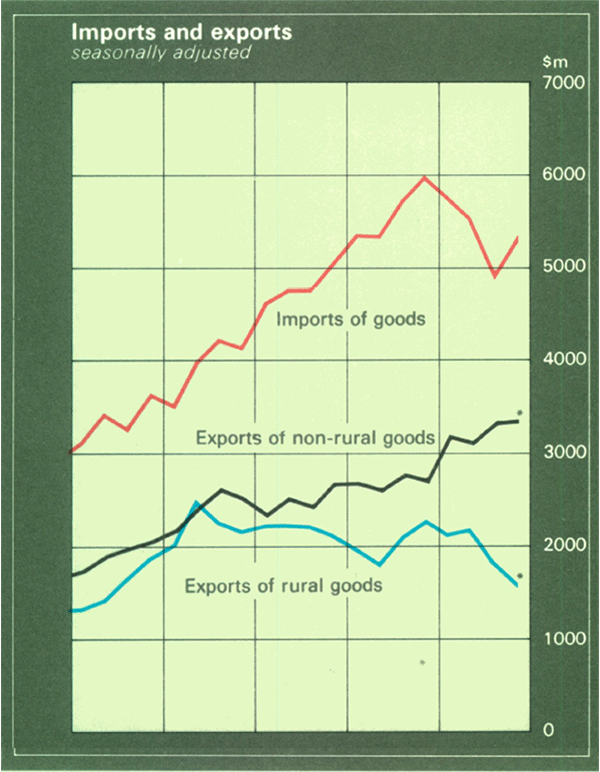
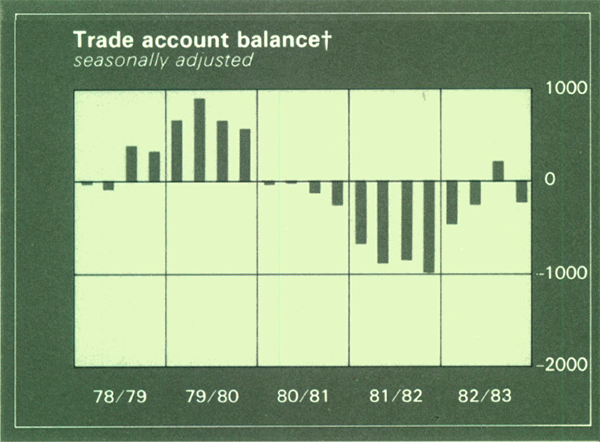
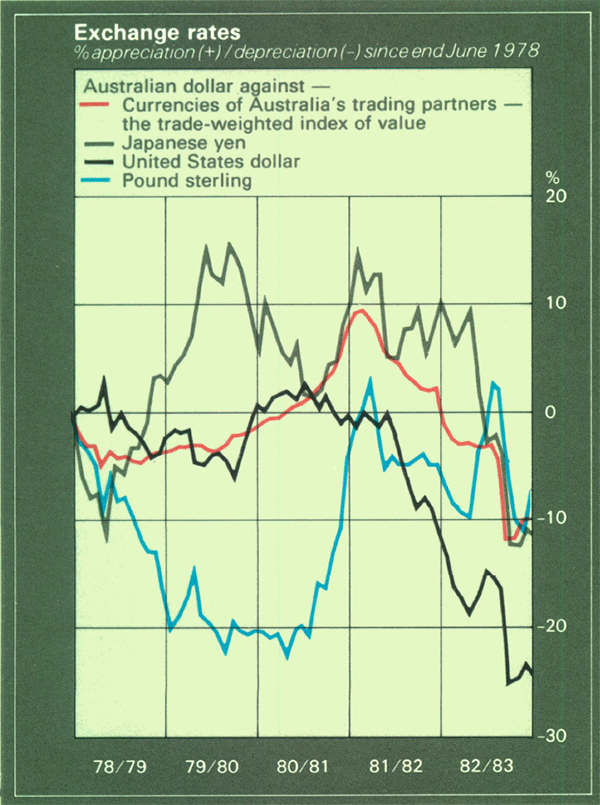
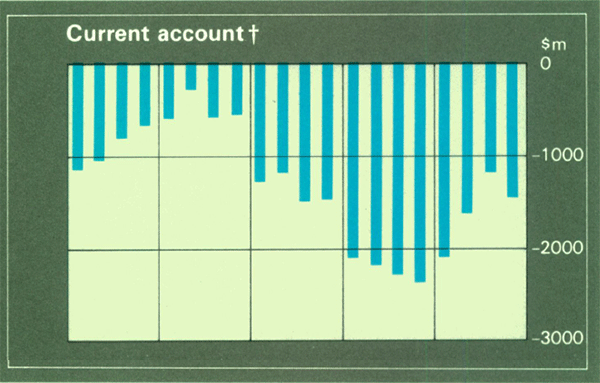
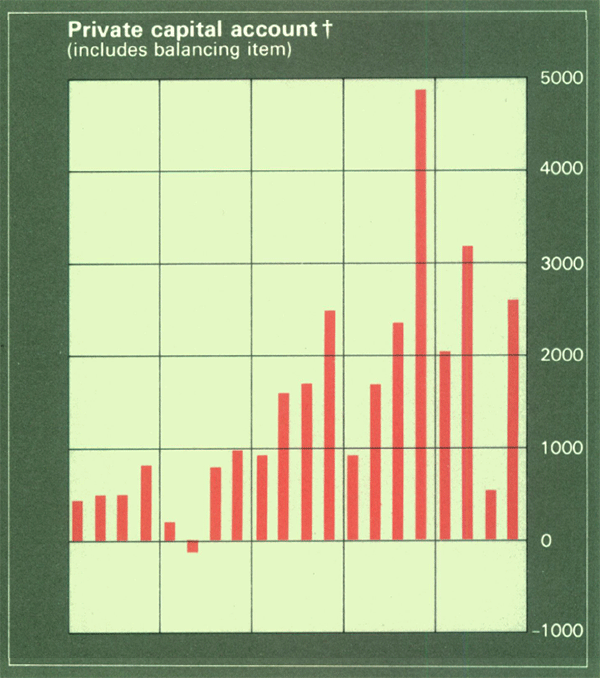
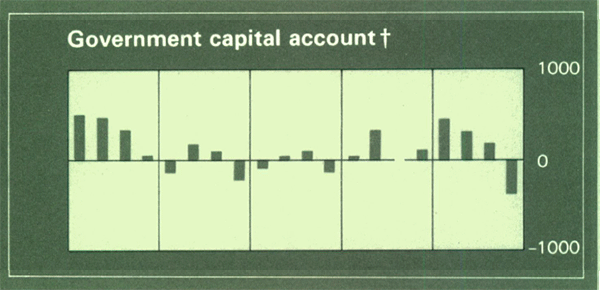
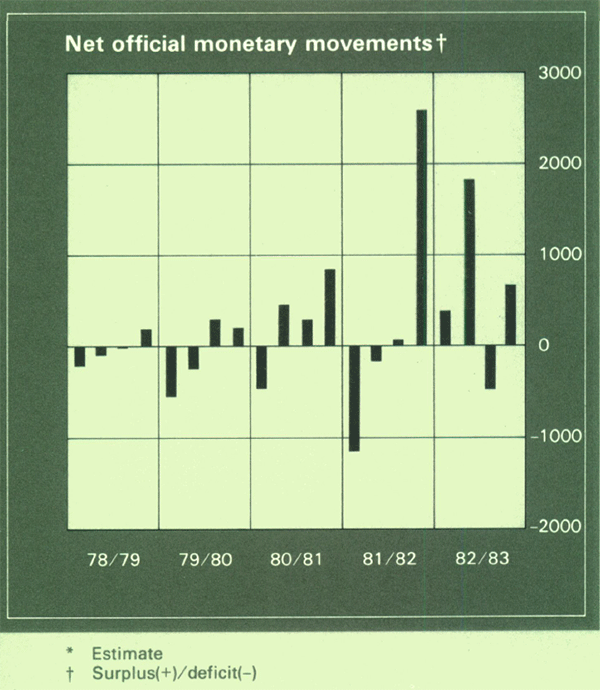
Among the components of domestic final expenditure, private investment remained especially weak. In real terms, capital expenditure by businesses fell by around 15 per cent; investment by manufacturers seems to have fallen most sharply. Private dwelling investment, in real terms, fell by about 20 per cent in 1982/83. However, aided by an increase in the availability of finance, the decline in expenditure on dwellings appeared to have come to an end in the second half of the year.
Private consumption grew only modestly in 1982/83 after a big increase in the year before. Although households' pre-tax incomes rose only slightly in real terms, growth in their real disposable income was boosted by cuts in personal income tax. The household saving ratio increased.
As the severity of the recession became apparent, there was a substantial rundown in stocks held by businesses. This, following increases during the previous year, had a big negative impact on production. Stocks of rural products were also much reduced because of supply shortages.
In contrast to the weakness in private expenditure, spending by public authorities increased strongly in 1982/83 with an estimated rise of over 5 per cent; capital spending by state and local authorities grew especially quickly.
Prices and incomes
Inflation remained high during 1982/83, particularly in comparison with inflation in other countries. However, inflationary pressure eased as the year progressed. This reflected the slow pace of economic activity and a moderation in wage claims culminating in the wages “pause” in the latter half of the year. The lessening of inflationary pressure occurred despite the substantial devaluation of the Australian dollar.
The consumer price index increased by 11.2 per cent over the course of 1982/83, slightly above the increase during 1981/82. This comparison obscures the fact that inflation slowed a little in the second half of 1982/83. Increased medical and hospital fees, indirect taxes and government charges, together with rising labour costs, boosted the index in the first half of the year but these influences abated in subsequent months. For most of the year, prices of non-food items rose more quickly than food prices; in the closing months, however, the breaking of the drought led to substantial increases in meat prices.
The implied price deflator for domestic final spending, a broader measure of inflation, increased by about 9.5 per cent during the year, compared with a rise of near 11.5 per cent the year before. As with the consumer price index, this deflator rose a little less in the second half of the year than in the first.
Average weekly earnings grew by about 7 per cent over the course of 1982/83, much below the increase of 15 per cent during 1981/82. Most of the latest result was recorded in the first six months when increases associated with the “mid-term adjustment” in the metal trades agreement of December 1981 had their effect. In December 1982, the Commonwealth Government initiated the process leading to award rates of pay being “frozen” in all States for at least the first half of 1983. After increasing by about 4 per cent in the six months to December, award rates were virtually unchanged in the subsequent half year.
9. Production and Spending
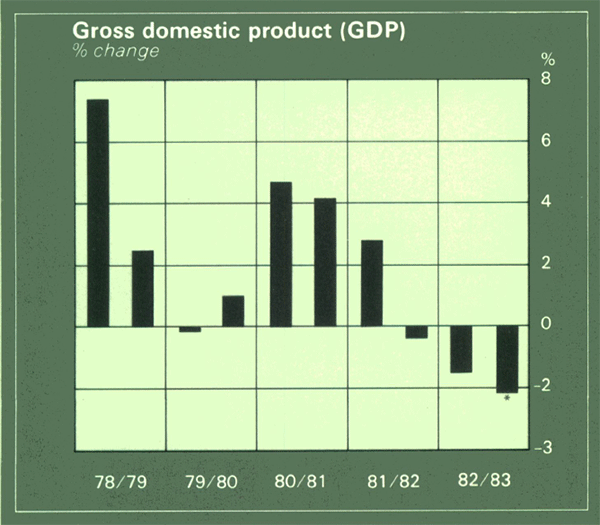
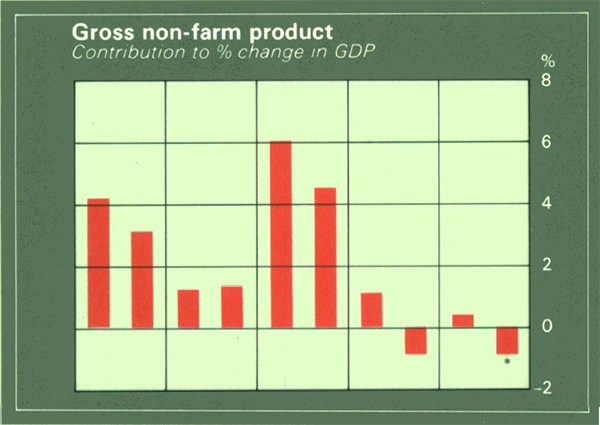
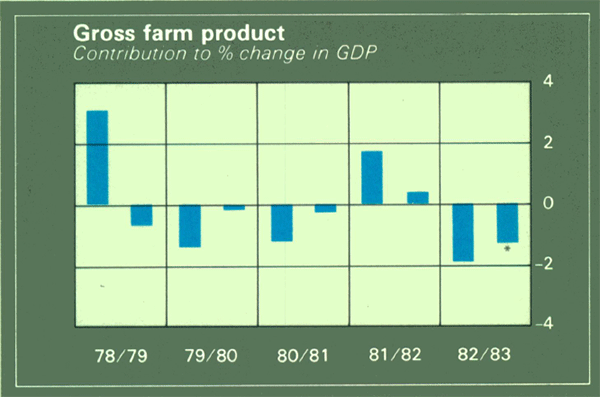
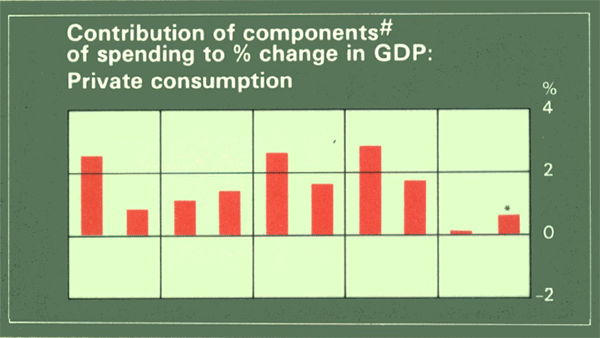
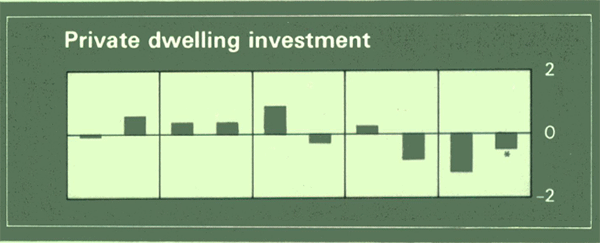
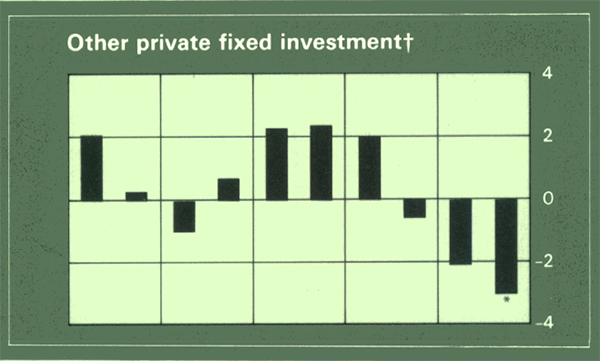
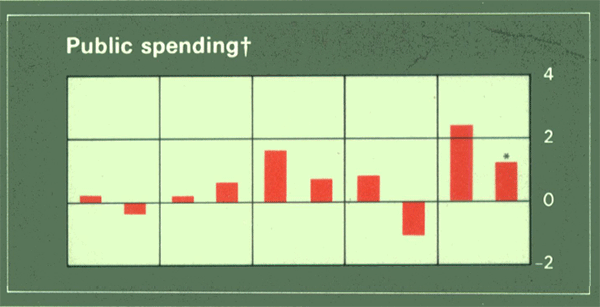
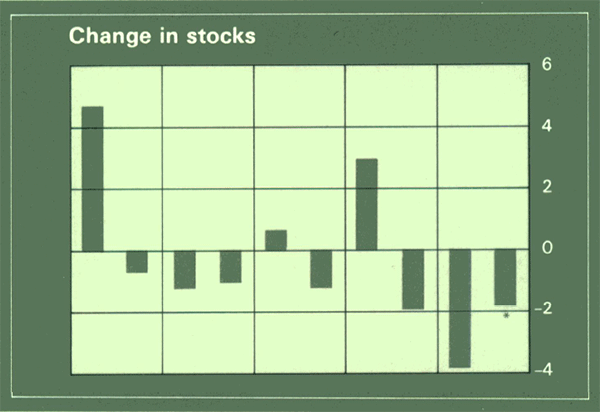
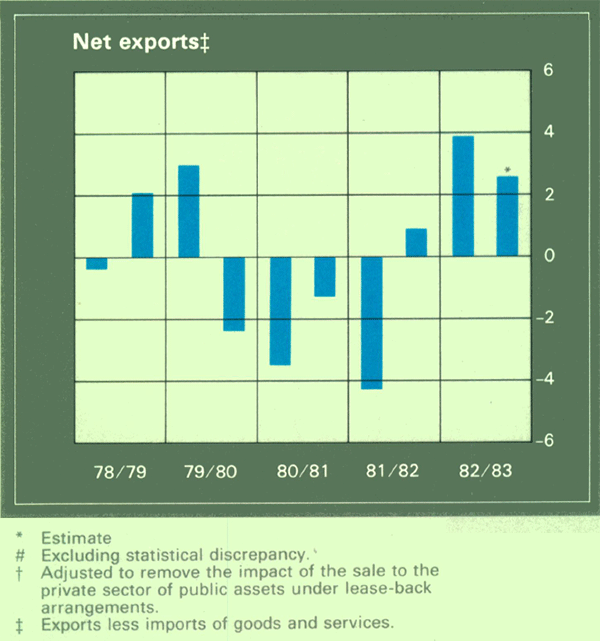
Taking the increase in wages and other labour costs together with growth in productivity, unit labour costs seem to have risen only modestly during 1982/83, after a steep rise during the year before. With producer prices increasing more quickly than these costs, unit labour costs in real terms showed a net fall during 1982/83. However, their average level for the year as a whole was little changed from the high figure recorded in 1981/82.
In 1981/82, the combination of rising wages and other labour costs, limitations on the extent to which prices could be raised and high interest costs had caused profits to be squeezed substantially. For 1982/83 as a whole, the proportion of national income accruing as gross operating surplus of trading companies seems to have declined further. However, towards the end of the year there may have been some restoration of profitability flowing from the decline in real unit labour costs.
The labour market
The labour market deteriorated sharply in 1982/83. Low profitability and expectations of weakening economic activity substantially cut the demand for labour, especially in the first half of the year.
Employment fell by about 2 per cent or 124,000 people between June 1982 and June 1983. Abstracting from seasonal influences, most of this fall (about 90,000) was in the first half of the year. Because of a decline in average hours per worker, total hours worked dropped more sharply than the number of persons employed – by about 3½ per cent. The fall in average hours worked was due to such factors as a shift towards part-time employment, reductions in standard hours of work in some industries, a fall in the amount of overtime and implementation of various other means of economising on labour. Reflecting movements in production, employment in secondary industry fell the most sharply during 1982/83; employment in parts of tertiary industry continued to grow.
With reduced opportunities for employment there was a decline, albeit modest, in the participation rate in 1982/83. This decline only partially offset growth in population of working age and the labour force increased by about 1.6 per cent, as it had in 1981/82.
Because employment was falling and the labour force growing, unemployment rose sharply in the first half of 1982/83. The unemployment rate jumped from 6.8 per cent (seasonally adjusted) in June 1982 to 9.2 per cent in December. By June 1983 it had risen further to 10.3 per cent but had been little changed for some months. The average unemployment rate during 1982/83 was about 9 per cent, compared with about 6 per cent in 1981/82. Over the year as a whole, the number of people unemployed increased by about 240,000 to 690,000 (not seasonally adjusted), with most of the increase in the first six months.
There was a particularly sharp increase in unemployment of adult males seeking full-time work during 1982/83; this accounted for about four-fifths of the overall jump in unemployment. Notwithstanding the rise for this group, average unemployment rates for others, particularly young people, remained much higher.
10. Prices, Incomes and the Labour Market
